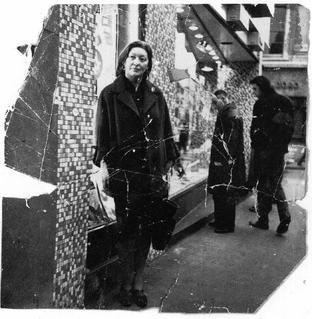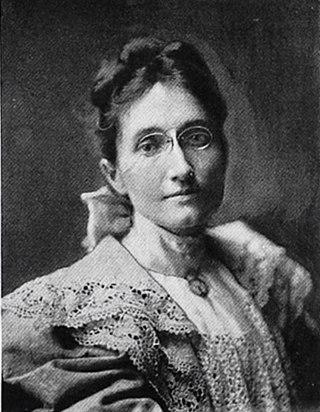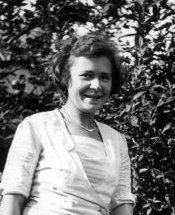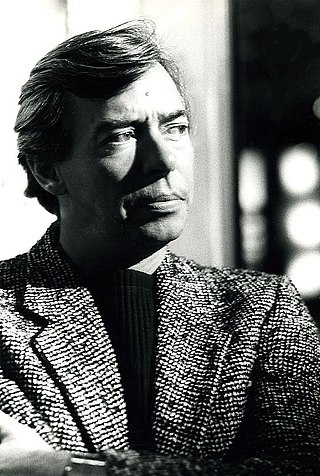Related Research Articles

Barbara Nessim is an American artist, illustrator, and educator.

Isabel Bishop was an American painter and graphic artist. Bishop studied under Kenneth Hayes Miller at the Art Students League of New York, where she would later become an instructor. She was most notable for her scenes of everyday life in Manhattan, as a member of the loosely-defined ‘Fourteenth Street School’ of artists, grouped in that precinct. Union Square features prominently in her work, which mainly depicts female figures. Bishop’s paintings won the American Academy of Arts and Letters Award, among other distinctions.

Laura Wheeler Waring was an American artist and educator, most renowned for her realistic portraits, landscapes, still-life, and well-known African American portraitures she made during the Harlem Renaissance. She was one of the few African American artists in France, a turning point of her career and profession where she attained widespread attention, exhibited in Paris, won awards, and spent the next 30 years teaching art at Cheyney University in Pennsylvania.
Eileen Cooper is a British artist, known primarily as a painter and printmaker.

Isabel Rawsthorne, also known at various times as Isabel Delmer and Isabel Lambert, was a British painter, scenery and costume designer, and occasional artists' model. During the Second World War she worked in black propaganda. She was part of an artistic bohemian society that included Jacob Epstein, Alberto Giacometti and Francis Bacon.
Marjorie Helen Arnfield, was an English artist who specialised in both industrial and rural landscapes, painting in oil, acrylic and watercolour. Her landscapes, particularly her paintings of Provence and Spain, are characterised by vivid colours and an impressionistic style. In an interview in the magazine Artists & Illustrators in 1998, Arnfield described her palette of colours, which included ochres, burnt siennas, cadmium, viridian, reds and blues, as "colours that sing".
Anita E. Kunz, OC, DFA, RCA is a Canadian-born artist and illustrator. She was the first woman and first Canadian to have a solo exhibit at the Library of Congress in Washington, D.C.
Bert Lewis Coombes , originally Bertie Lewis Coombs Griffiths, was an English-born writer. Coombes moved to Resolven from England before World War I and spent most of his working life in the coal mines of the South Wales coalfield, which provided the subject matter for much of his writing.
Susan Dorothea White is an Australian artist and author. She is a narrative artist and her work concerns the natural world and human situation, increasingly incorporating satire and irony to convey her concern for human rights and equality. She is the author of Draw Like da Vinci (2006).
Roland Wakelin was a New Zealand-born Australian painter and teacher.
John Stanton Ward CBE was an English portrait artist, landscape painter and illustrator. His subjects included British royalty and celebrities.
Ray Mutimer is a British illustrator.

Alice Barber Stephens was an American painter and engraver, best remembered for her illustrations. Her work regularly appeared in magazines such as Scribner's Monthly, Harper's Weekly, and The Ladies Home Journal.

Percy Alexander Leason was an Australian political cartoonist and artist who was a major figure in the Australian tonalist movement. As a painter and commercial artist his works span two continents.

Yvonne Drewry was an English artist and art teacher, noted for her work in and around Suffolk.

Laura Coombs Hills (1859–1952) was an American artist and illustrator who specialized in watercolor and pastel still life paintings, especially of flowers, and miniature portrait paintings on ivory. She became the first miniature painter elected to the Society of American Artists, and was a founder of the American Society of Miniature Painters. She also worked as a designer and illustrated children's books for authors such as Kate Douglas Wiggin and Anna M. Pratt.

Robert Heindel was an American painter, illustrator, and stage designer best known for his paintings of dance and performing arts. Heindel created over 1300 paintings and drawings of dance and performing arts during a twenty-five year period in the late twentieth century. He was described as the best painter of dance of his time.
Hilda Rue Wilkinson Brown (1894–1981) was an artist and teacher from Washington, D.C. Brown was involved in art education, developing curriculum that challenged the typical mimetic approach of teaching in favor of more individual creativity. The focus of Brown's life was her career as an educator, but she was also a prolific artist in her own right. She made illustrations for African American publications such as The Brownie's Book and Crisis magazine. She was also a painter and printmaker. Her prints are included in the collections of the Metropolitan Museum of art and the Art Institute of Chicago.

Thomas Holroyd was an English portrait and landscape painter working in Harrogate, North Riding of Yorkshire, England. Before his marriage he undertook painting tours to the United States, Canada, Europe, Egypt, Russia and the Holy Land. Returning to Harrogate, he painted portraits of the local worthies there. He shared responsibility for the successful photography business T & J Holroyd with his brother James, and continued to run the business after his brother died. Holroyd was a founding member of Harrogate Liberal Club.
Ludwik Dutkiewicz was an Australian artist born in Poland. He was born in Stara Sil, Ukraine on 2 February 1921. He won the 1953 and 1954 Cornell Prize.
References
- 1 2 3 "Isabel Alexander: artist and illustrator". Isart Press. Retrieved 16 February 2017.
- 1 2 3 "Now representing: Isabel Alexander". bridgemanimages.com. Retrieved 16 February 2017.
- ↑ "Some talk of Alexander". The Northern Echo. 16 January 2017. Retrieved 16 February 2017.
- 1 2 3 4 5 McKenzie, Janet (2017). Isabel Alexander: artist and illustrator. Isart Press. ISBN 9781527203624.
- ↑ "Penguin First Editions :: Early First Edition Penguin Books :: penguinfirsteditions.com". penguinfirsteditions.com. Retrieved 16 February 2017.
- ↑ "Isabel Alexander: Creative spirit in Harrogate". Yorkshire Evening Post. Retrieved 16 February 2017.
- ↑ Alexander, Isabel (1996). Sources of 20th Century Art. Mimeo.
- ↑ Cryer, Clare. "Exhibitions at the Mercer Art Gallery". Government of the United Kingdom. Retrieved 16 February 2017.
- 1 2 "Miner's Day: B. L. Coombes, with Rhondda Images by Isabel Alexander (Hardback)". Parthian Books. Retrieved 29 October 2021.
- 1 2 Press, Grey Mare. "Rhondda Portraits: Images by Isabel Alexander, Commentary by Donald Alexander". Grey Mare Press. Retrieved 5 August 2024.
- ↑ "Bridgeman Education". Bridgeman Education. Retrieved 16 February 2017.